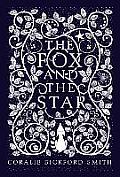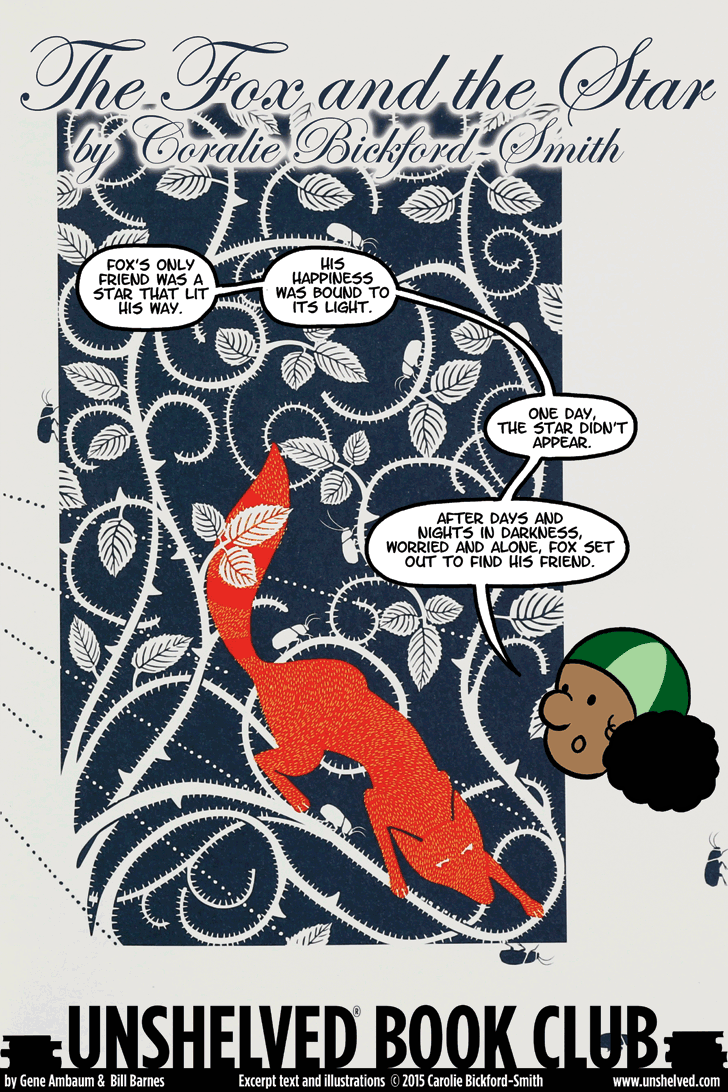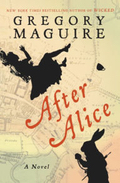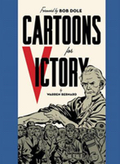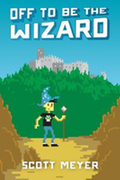Link to this review in the form of a comic strip by geneambaum tagged picture book • literary
Link to this review by wally tagged classic • fantasy
In 1860s Oxford, Ada Clowd, a girl wearing an iron brace whose only friend is the wandering and easily distracted Alice of Wonderland fame, is sent to deliver a jar of marmalade to Alice’s grieving family. She sees a rabbit in a waistcoat and follows him, falling into Wonderland herself. There Ada encounters familiar and unfamiliar Wonderland denizens, and learns that Alice may be there, too.
Meanwhile, Alice’s sister Lydia must fend off an annoying governess while Lydia’s father entertains the ailing Charles Darwin, his American attendant, and a young escaped slave named Siam. As the governess keeps Lydia and Siam busy searching for Ada, Lydia learns more and more about Siam’s journey from slavery to Oxford. But when Lydia accuses Siam of stealing a chess piece, he makes a fateful decision and ends up in Wonderland himself.
Why I picked it up: Lewis Carroll’s Wonderland books are some of my favorite childhood reads, and I loved how Gregory Maguire re-envisioned the Wizard of Oz books.
Why I finished it: Maguire is at the top of his form here. He uses real historical markers to anchor the story — the June day in Oxford is likely the exact date that Lewis Carroll rode out on the river with Alice, Lydia, and Ada, and told them a fantastic tale. Then he fully explores Wonderland with Ada as if it is a real place. The dialogues between Ada and a number of Wonderland’s denizens sound as if they were penned by Carroll, and there’s more plot here than Carroll ever had.
It’s perfect for: Trudy, who would find a lot to discuss with her book club, including themes of freedom and imagination. She’d also enjoy the word play throughout, which is on par with Carroll’s.
Link to this review by lynn tagged nonfiction
In 1997, Gary Vaynerchuk launched WineLibrary.com in the hopes of getting people to talk about wine. (He was being groomed to take over his father’s liquor business and wanted to sell wine, and he thought talking about it on the internet was a good way to get started.) It appears to have worked, because by 2010 Vaynerchuk was selling sixty million dollars worth of wine a year.
Now Vaynerchuk is eager to share what he’s learned about internet communication in general and social media in particular. Using anecdotes not only from his own experiences, but also from companies as diverse as AJ Bombers (burgers in Wisconsin) and Zappos (shoes everywhere), Vaynerchuk hammers in his central theme: a business’s ability to both care about its customers and communicate that concern determines its eventual success far more than prices or the mass appeal of its product.
Why I picked it up: When the new director of our library came on board, he sent out several links to videos and PowerPoints to inspire us to think about the place of a public library in current culture. Most of them took the “one weird trick” approach, implying that any kind of business could succeed in today’s brave new world of ubiquitous communication by adopting the author’s favorite gimmick. Vaynerchuk’s presentation, on the other hand, noted that if everyone is doing the same thing, regardless of how awesome it is, no one will stand out from the crowd. This was so refreshingly logical that I figured I’d read his book to see if he could keep his rational-but-enthusiastic streak going.
Why I finished it: His ghostwriter. Let me explain. Vaynerchuk acknowledges his ghostwriter, Stephanie Land, at the very beginning of the book. Twice. And I can see why: this woman has managed to translate the musings of a guy who has some very good ideas but no clue about narrative flow (watch the presentation linked above, you’ll see) into a readable book. And then, because she’s the smartest ghostwriter ever, she includes a chapter at the end called “Sawdust” with all the ramblings she couldn’t fit elsewhere. It’s the best of both Garys.
It’s perfect for: Kenny, a salesman I used to work with in California. He’s a student of the Zig Ziglar school of sales who believes that a truly confident person could convince Steve Jobs to buy Microsoft stock. Since Gary Vaynerchuk is very confident, maybe he will be able to convince Kenny to pay at least a tiny bit of attention to what the customer actually wants.
Link to this review by emilyreads tagged literary
Mimi is one of the last Millers in Miller’s Valley, PA. Her father works from dawn to dusk on their small cattle farm; her mother works as a second-shift nurse; her older brother is off in the city living the middle-class dream with his wife and kids; and her other brother, Tommy, is a golden child with a bad-boy streak that just might be the death of him. Mimi never expects anything to change. But then water department officials start enticing residents to sell their homes and move to higher ground so they can build a new dam and flood the valley. Things begin to shift. Tommy heads to Vietnam and comes back a broken, bitter man. Mimi’s aunt Ruth, who lives in the small house behind theirs, becomes more and more reclusive. As Mimi’s success at school begins to point to new and bigger opportunities outside the valley, she has to decide where her path lies as family tragedies conspire to keep her at home.
Why I picked it up: I’ll read anything Anna Quindlen writes. I’ve also long been intrigued by “flooded town” stories, since I live not too far from the Quabbin Reservoir, which was created in the early 20th century by flooding four towns in central Massachusetts.
Why I finished it: In the current climate of constant outrage, hysteria, and repudiation of past choices, it was cleansing to read a story about hardworking, salt-of-the-earth people who made huge mistakes and lived with them, sticking with family and community even when personalities clashed and rotten things happened. There’s a resilience in all of Quindlen’s characters that I can’t help but admire.
It’s perfect for: I’d give it to my Realtor friend, Suzanne, who loves gripping fiction about families, and whose mother-in-law Jackie French Koller wrote a middle-grade novel about the Swift River flooding that created the Quabbin, Someday.
Link to this review by sarahevans tagged coming of age • paranormal
The dead have begun to rise at night and attack people. The touch of a ghost kills living tissue. Adults can sense them, but only youth have the ability to see and fight against ghostly forms. In order to protect themselves, people wear sprigs of lavender and silver jewelry, and seal themselves in behind iron doors at night. Many children are employed to forewarn adults of spectral activity, but only the most talented become agents at psychic investigation agencies. Their job is to locate and then seal up or destroy the sources of active hauntings (often a ghost’s remains or personal memento).
After eighteen months with Lockwood and Co., the smallest agency and the only one owned by a teenager, Lucy feels truly at home. She has developed respect and begrudging affection for George Cubbins, who is always messy but excels at researching what’s needed to solve a case. Her admiration of their charismatic leader Anthony Lockwood continues to deepen, though she chafes at the way he holds her at an emotional distance. And Lucy’s exceptional talent for listening to the dead is growing, helped along by regular conversations with the nefarious spirit clinging to a skull they keep in a silverglass jar. Although they’ve been working too many cases lately, Lucy thinks life at their home/office is perfect. But her happiness begins to unravel when Lockwood suddenly hires Holly Munro, a former agent turned administrative assistant. Holly’s energetic efficiency wins her Lockwood’s praise while her dainty ways and stylish looks earn Lucy’s disgust. But unchecked emotions can attract deadly spirits, and London is currently suffering the worst outbreak of spirits ever seen since the problem began. Official efforts to stop the hauntings fail to make progress, so the team must work together with unlikely allies to take on the strongest psychic source yet encountered.
Why I picked it up: I read the previous books in the series and was mesmerized with the detailed descriptions of England under ghostly siege. I’m so in love with the relatable characters, dry humor, and pulse-pounding action, that it’s almost painful to wait for another volume. I want to stalk the author and make him write faster.
Why I finished it: With this volume, the series shifts gears from awesome to epic. There has always been more going on in this world than the individual hauntings tackled by Lockwood and Co. Now I started to see the larger picture, including citizens frustrated over the government’s inability to cope with the problem and a mysterious society of powerful people seeking to understand the problem through unknown means. I also appreciated how each of the characters changes in light of their experiences. George’s confidence and leadership abilities increase with his success as a researcher. Lockwood’s continued desire for more recognition propels him to make choices that alter his relationships. And Lucy’s talent leads her to question the standard aim of all agents, to locate and destroy all sources of ghostly activity. Can she and Lockwood ever really see eye to eye on this when he still grieves the death of his older sister at the hands of a spirit?
It’s perfect for: My friend Biz who enjoyed Stroud’s previous series, the Bartimaeus Sequence. She was unsure if she wanted to read about ghosts until I described this scene. Imagine a nighttime parade of floats and large balloons intended to inspire confidence in a fearful populace. Our heroes are riding in the lead float with the rich and famous when Lucy hears glass break. A skeletal form suddenly rises up from the ground and passes through a woman who collapses at its touch. Lucy and Lockwood spy black clad figures throwing glass ghost bombs at the parade, creating chaos as adults run blindly and youth attempt to hold off the specters. The attackers flee as our heroes follow across trucks and floats and through the streets of London.
Link to this review by geneambaum tagged nonfiction • art • history
During World War II, comics blurred “the lines among entertainment, education, and propaganda… . [T]hey aimed to modify people’s behavior… . [C]artoonists felt it was their patriotic duty to help the government get messages across to the American Public.” The comics and other work by cartoonists of the era reprinted in this book reflect how the U.S., especially with the help of its homefront, marched toward victory.
Why I picked it up: After I met Warren Bernard at SPX earlier this year, I wanted to read his book.
Why I finished it: My high school history teachers sucked: they weren’t just uninspiring, they were also uninformative. I learned more about WWII from Bernard’s introductory essays and the art in each chapter than I ever had anywhere else, on topics like war bonds, preparing for blackouts, rationing, the black market, victory gardens, and more. Some of the propaganda is so clumsy it’s funny, like the cover of Comic Cavalcade featuring Green Lantern, Wonder Woman, and the Flash recycling urgently needed waste paper. But many of the comics and illustrations are brilliant, like Otto Soglow’s ad for TOPPS gum that warns against careless talk (“Don’t talk chum, chew gum”), and his wordless piece cautioning against spreading rumors. This book is huge, with most of the art reproduced at a large, easily readable scale. It isn’t just informative; it’s a hugely inviting coffee table book.
Readalikes: Willie & Joe: Back Home by famed Stars and Stripes cartoonist Bill Mauldin. After doing one panel about Willie and Joe serving in WWII, he brought them home, and these comics reflect the bitterness of their return to civilian life as well as the racism of the time. They’re brilliant and also taught me a lot about the era.
Link to this review by flemtastic tagged fantasy • science fiction
Martin is noodling on the internet when he finds a strange five-terabyte file which contains personal information about him. When he changes something in the file, it changes in real life. Soon, he has changed his bank account balance, his height and weight, and given himself superpowers using apps on his phone. The FBI has noticed, though, and when they investigate they seize his phone. He offers to show them how his powers work, but upon getting his phone back he presses the escape button he had prepared, sending himself to the year 1150. (He had read that that time was the best to live in medieval England.) There he sets up a showdown with a local wizard to enhance his status, only to be beaten down and sent packing. Martin regroups and makes more changes (his phone still works), because to survive in the past he needs to step up his game.
Why I picked it up: Have you ever had an eighth grader recommend a book to you, then pester you repeatedly on whether you had read it or not? At some point, it is easier to just read the thing than to try to explain (yet again) to the kid you haven’t read it yet. That’s what happened.
Why I finished it: It’s really clever. Early in the book, a wizard shows how he has spelled his toilet to eliminate waste and send it to an entirely different place. 200 pages later, that little throwaway becomes important. The rules about what can and can’t be done by changing data are integral to the story and lead to exciting plot developments, like when the bad guy takes away Martin’s powers. And there is a funny recurring gag over a few hundred pages as Martin learns about medieval stew the old-fashioned, stomach-clenching way.
It’s perfect for: Mike, who turned me on to Ready Player One by Ernest Cline. This book has a lot of the same type of humor, references to now-dated products (a Pontiac Fiero features prominently), and it’s a general celebration of geekdom. (Mike, I’m not saying you’re a geek, but you do have a lot of collectible action figures still in their packages at your house.)
